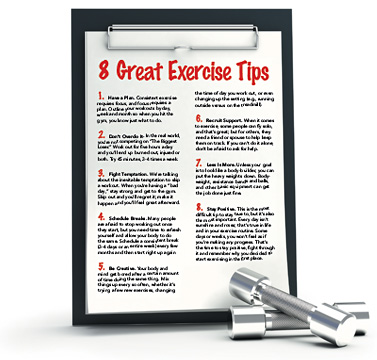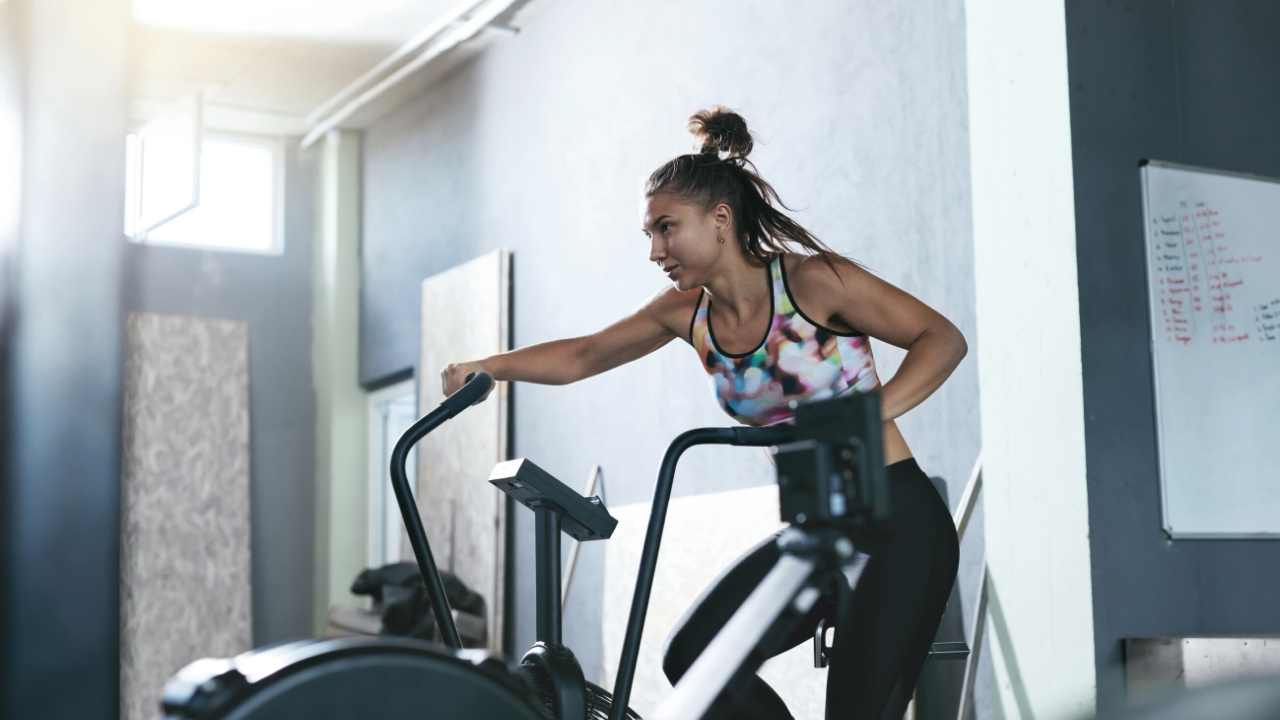
Both mother and baby need to be active during pregnancy for their health and well-being. For both infants and women, the recommended maximum heart beat is 65 beats per hour. The safe maximum and resting heart rates are lower in pregnant women than in women who are not. There are many exercise options that work for every stage of pregnancy, including walking and swimming. Consider these tips to make the most of exercise.
Start slow and choose something you enjoy. To find out which activities are safe, consult your provider. You can begin with small activities, then increase to 30 minutes daily of aerobic exercise. Brisk walking is a great way to exercise your body. Once you have a solid routine, you can increase your intensity and duration of physical exercise.

When exercising during pregnancy, make sure you wear loose, comfortable clothing and a bra that is supportive. You can avoid injury by exercising on a smooth surface. Stay hydrated with plenty of water. When doing floor exercises, slowly get up from the floor to avoid injury. You could also try yoga, if you're just starting out. Try walking instead of yoga if you aren’t sure if it is for you.
Keep your exercise routines gentle and moderate during pregnancy. Your balance will be improved if you keep your cardiovascular and aerobic routines up until your due date. Consult your healthcare provider first if exercise is something you are unfamiliar with. This will help you avoid any injury, including high blood pressure. Be aware of your body and not push it too hard. Remember to be gentle with yourself and take it easy.
Apart from aerobic exercise, pregnancy fitness can be achieved with a variety of other forms of physical activity. According to the American Pregnancy Association, pregnant women should exercise 30 minutes per day. This does not mean that pregnant women should exercise vigorously. But, it should be enough to keep fit and healthy. The ideal level of physical activity during pregnancy is 150 minutes per week, which is close to the recommended range of moderate to vigorous exercise. It is recommended that pregnant women do aerobic exercise during the first trimester if they want to avoid premature births.

Don't push yourself to go faster than you can. If you are new to exercise, avoid activities that demand intense energy. A few minutes a day of aerobic exercise is sufficient. For beginners, it is best to keep to a moderate level. Avoid strenuous exercise during the first trimester.
FAQ
How does an anti-biotic work?
Antibiotics are drugs that destroy harmful bacteria. Antibiotics are used to treat bacterial infections. There are many types and brands of antibiotics. Some can be taken orally while others are injected. Others are topically applied.
People who have been infected with certain germs may need antibiotics. If someone has chicken pox, they might need to take an oral antibiotic in order to prevent shingles. An injection of penicillin may be necessary to prevent pneumonia if someone has strep.
Children should not be given antibiotics without the consent of a doctor. Children are at greater risk of developing side effects from antibiotics than adults.
Diarrhea, the most common side-effect of antibiotics, is probably diarrhea. Side effects of antibiotics include diarrhea, stomach cramps and nausea. These side effects are usually gone once the treatment is complete.
How much should my body weight be for my height? BMI calculator and chart
A body mass index calculator (BMI) is the best way to find out how much weight you should lose. A healthy BMI range is between 18.5 and 24.9. Aim to lose 10 pounds per month if your goal is to lose weight. Enter your height in the BMI calculator.
To see if you're overweight or obese, check out this BMI chart.
What's the problem in BMI?
BMI stands for Body Mass Index, which is a measurement of body fat based on height and weight. The following formula is used to calculate BMI:
The weight of a kilogram divided by its squared height in meters.
The result is expressed using a number from 0 through 25. A score of 18.5+ indicates that you are overweight. A score higher than 23 indicates that you are obese.
A person of 100 kg with a height of 1.75m will have 22 BMI.
What's the difference between a virus & a bacterium?
A virus, a microscopic organism, is incapable of reproducing outside its host cell. A bacterium is an organism that splits itself in two. Viruses measure only 20 nanometers in diameter, but bacteria is up to 1 millimeter in size.
Viruses can be spread by contact with bodily fluids containing infected substances, such as saliva, urine and semen. Bacteria are often spread via direct contact with contaminated surfaces or objects.
Viruses can get into our bodies through cuts and scrapes on the skin, bites, and other injuries. They can also be transmitted through the eyes, nose, mouth, ears, rectum, and anus.
Bacteria may enter our bodies through cuts and scrapes on our skin, burns, insect bites, and other wounds. They may also be introduced into our bodies through food and water as well as soil, dirt, dust, and animals.
Both bacteria and viruses can cause illness. But viruses do not have the ability to multiply within their hosts. They infect only living cells, causing illness.
Bacteria can spread within the host and cause illness. They can even invade other parts of the body. We need antibiotics to get rid of them.
What is the healthiest lifestyle to life?
Healthy lifestyles include eating healthy food, regular exercise, good sleep, and avoiding stress. This will ensure that you live a long healthy life.
You can start by making small changes in your diet and exercise routine. To lose weight, you can start walking for 30 mins each day. Or, if you want to get more active, take up swimming or dancing. You can also sign up for an online fitness program, such as Strava and Fitbit. This will track your activity.
What are the 10 most delicious foods?
These are the 10 best foods you can eat:
-
Avocados
-
Berries
-
Broccoli
-
Cauliflower
-
Eggs
-
Fish
-
Grains
-
Nuts
-
Oats
-
Salmon
What's the difference of a calorie versus a Kilocalorie?
Calories can be used to measure how much energy is in food. Calories are the unit of measurement. One calorie is the amount of energy required to heat one gram water one degree Celsius.
Kilocalories refer to calories in another term. Kilocalories are measured in thousandths of a calorie. For example, 1000 calories equals one kilocalorie.
Statistics
- WHO recommends reducing saturated fats to less than 10% of total energy intake; reducing trans-fats to less than 1% of total energy intake; and replacing both saturated fats and trans-fats to unsaturated fats. (who.int)
- According to the 2020 Dietary Guidelines for Americans, a balanced diet high in fruits and vegetables, lean protein, low-fat dairy and whole grains is needed for optimal energy. (mayoclinichealthsystem.org)
- In both adults and children, the intake of free sugars should be reduced to less than 10% of total energy intake. (who.int)
- WHO recommends consuming less than 5% of total energy intake for additional health benefits. (who.int)
External Links
How To
How to stay motivated and stick to healthy eating habits and exercise
Tips for staying healthy and motivated
Motivational Tips for Staying Healthful
-
List your goals
-
Set realistic goals
-
Be consistent
-
Reward yourself when your goal is achieved
-
Even if you make a mistake, don't quit!
-
Have fun